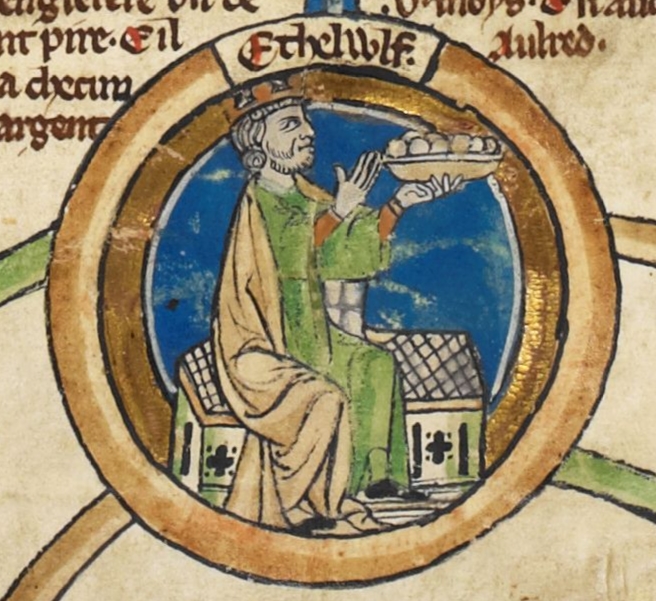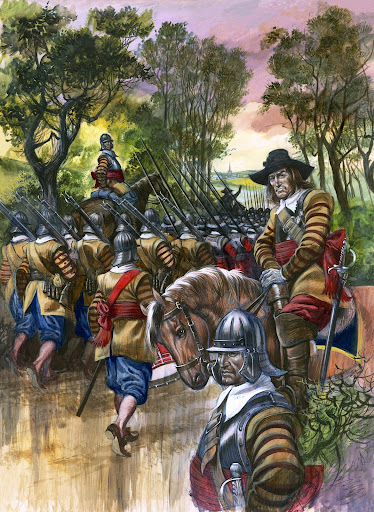


FARNBOROUGH - EARLY HISTORY
The article on this page was originally published in five parts in 1997 editions of the magazine of St. Giles church in Farnborough parish. The author was the late Peter Bailey, long term resident of Farnborough. He had many and diverse interests, and contributed greatly over many years to the well being of and record keeping for the parish.
From First Records up to the Twelfths Century
In 862 the King of Wessex issued a Charter granting to his minister
Drightwald, ten hides of land, about 1.268 acres in Farnborough
(Imperial measure). It is not known how the land was farmed under his
Lordship but some of the field names on the Tithe Maps suggest that at
least some part of it was cultivated.Gundulp, was the first Norman Bishop of Rochester. He came in to office in 1077, and recorded in his register that he was in receipt of the tithes of Chelsfield and of Farnborough and that they had been given to the Bishops of Rochester by Arnulf of Chelsfield, also known as Ernulf de Hesdin
Arnulf also had eight acres of meadow which would have produced hay to feed the oxen in winter, a pasture (permanent grassland) sufficient to feed or produce 100 sheep a year - experts are uncertain which - and woodland which would feed or produce ten pigs each year. He also had a mill, two villagers and three smallholders who had their own plots of land but would also have to work for Arnulf on his land.
The King (William II) also owned woodland then valued at 8 shillings, about the same value as the mill. There were two other land holders in Farnborough at this time. Mauger was one, holding half-a-yoke (15 acres), which he farmed, and he had a smallholder with two oxen, (a yoke) which could plough 30 acres during the ploughing season. With an added two acres of meadow, the value of his whole Holding is given at 15 shillings. Wadard was the other land holder, holding half a sulung (60 acres) of land officially but was in fact farming land which required the services of three ploughs (360 acres). He also had four acres of meadow, woodland to feed 5 pigs and half a share in a mill valued at 5 shillings, - half shares in mills were usually brought about by the mill being on a stream which formed the boundary between two manors, so half was deemed to be in each manor. A villager, 2 cottages and 5 slaves made up the rest of his possessions.
From this it is not possible to gain a very accurate picture of 12th Century Farnborough but it seems to have consisted of over 615 acres of cultivated land (compared with 763 acres of arable land in 1840) and 14 acres of hay meadow and grassland large enough to feed or produce 100 sheep annually (152 acres of meadow and pasture in 1840). Surrounding woodland was sufficient for 15 pigs, plus a much larger area belonging to the King (forest for hunting in, perhaps). (The woodland figure of 1840 is 247 acres)
In 1088 Farnborough existed but was quite a small habitation, on the face of it. There were only 14 inhabitants but this might be only counting the workers and not the members of their family. Although there was no Church recorded in the Doomsday Survey in 1088, it can be safely assumed that Farnborough Church was built soon afterwards as this is confirmed by its architecture.
End of 12th Century to mid 16th Century
Arnulf’s Manor of Chelsfield brought him in twenty times the income of the Farnborough holdings so it would be likely he would base himself at Chelsfield, gathering his officials around him. At this time in history it was usual for the Bishop having been granted the tithes, to retain a quarter of these for his own needs and to give the other three quarters to the Parish - (one quarter for the upkeep of the Chancel in the Parish Church and the remainder to be used by the Priest for the relief of the poor of the Parish).By 1302 Farnborough Village had become part of the defuse Manor of Farnborough, having passed from the exiled Odo into the hands of the de Monforte family. The same person would normally have been appointed as Rector of Chelsfield and Farnborough, residing in the more affluent Parish of Chelsfield where his Patron lived, and appointing a Curate to look after Farnborough.
A record in a register of a XIV Century Archbishop of Canterbury, Archbishop Courtney, states that John de Dountone held only the living of Farnborough in 1385. The earliest recorded Curate was John Polhill who was buried at Chelsfield in 1510 Although at present it is surmised that the Church was built in Norman times, it is recorded that in 1503 Walter Stable, by his will proved in the Court at Canterbury, left to the ‘Chirche of Farnborow Vjs VIIJd’ (6s.8d.), (a third of a pound or one Mark, which was the traditional unit) Recorded in 1511,
Thomas Wilkynson left, ‘to the werkys of the body of the pissle churche of Farnborough, XXs’, the first pound donated to the care of the Church fabric that is known about, at a time when the Tithes of Farnborough yielded the sum of £2.5s.4d..
William Lambard, who wrote ‘A Perambulation of Kent’ in 1570, was trained as a lawyer at Lincoln’s Inn, became Keeper of the Rolls in Chancery in 1597 and Keeper of the records in the Tower of London in 1600. He made a study of the history of the law as far back as Saxon times and also made a collection and translation of Saxon Law which he published in 1568. His published work has proved to be remarkably accurate. He gives details of the Deaneries which made up the Diocese of Rochester at that time. Farnborough was in the Deanery of Shorham, of which Lambard says, ‘It is a peculiar of the Archbishop of Canterbury and with which the Bishop (Rochester) does not meddle’.This Deanery contained about thirty benefices, Farnborough being included in the list as, ‘Orpington, with the Chapell of Farnborowe, and Vicarage’. He also records that the Tithes of Farnborough were worth £2.5s.4d. (Chelsfield was £3.6s.8d.).
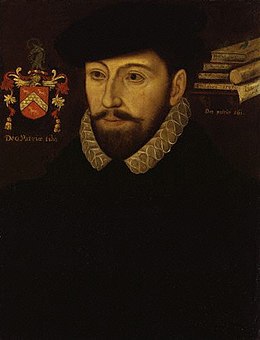 |
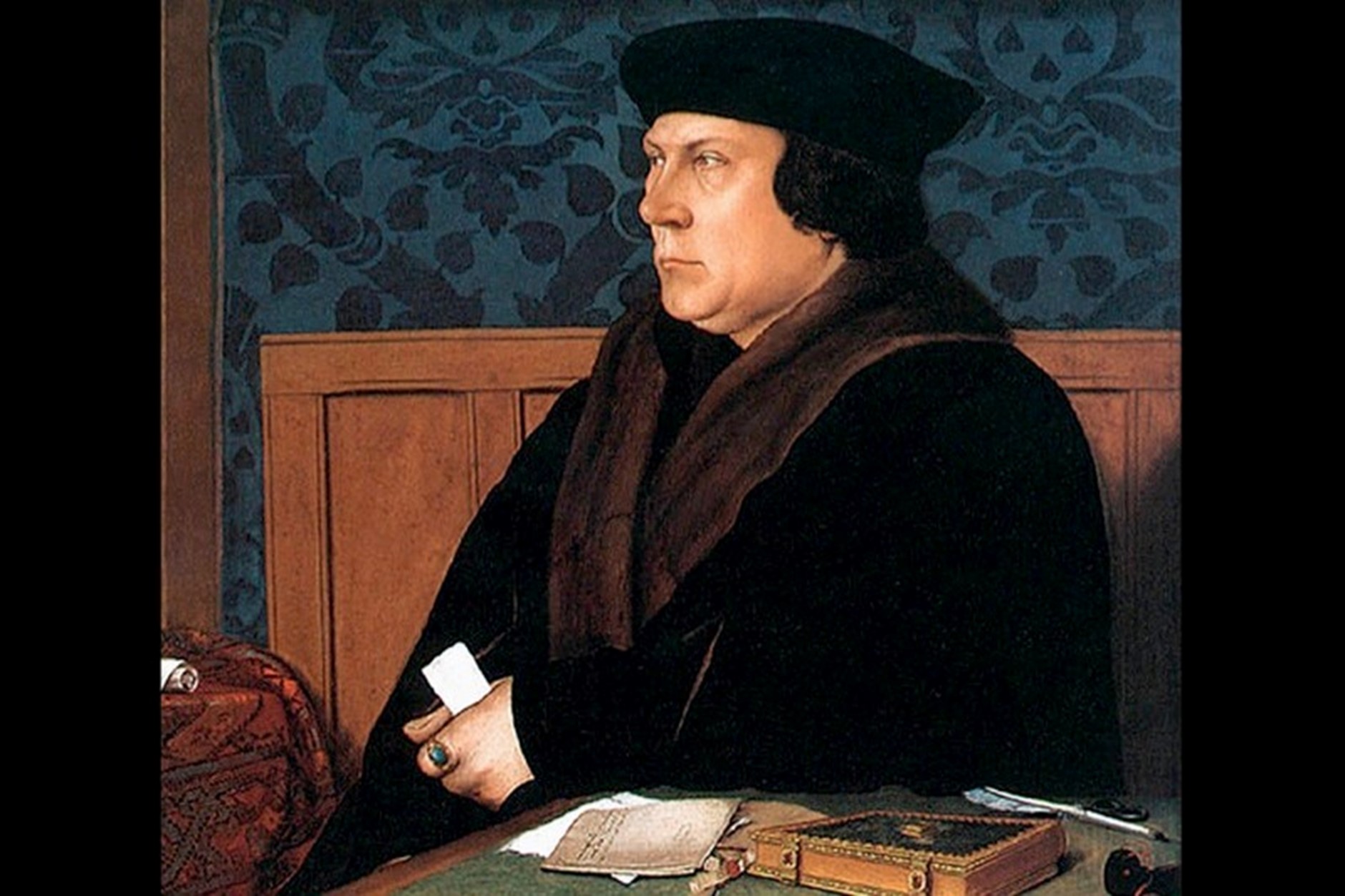 |
| William Lambard | Thomas Cromwell |
The 5th of September 1538 saw the proclamation of the Injunctions of Henry VIII’s Vicar General, Thomas Cromwell ordering the keeping of Parish Registers. The Farnborough Register, one of the few surviving original paper registers, begins: Matrimonia Baptismata et Sepurae in Farnbro Tempore Regis Henrici 8o incoat 30 Ao ejus Regni et Ao Dm 1538
Farnborough, unlike many parishes, had complied rapidly with the law and began to record not only marriages, baptisms and burials which took place in the parish but also imparting information about compliance with new laws and sometimes about events of purely local interest. 1546 Hoc AO predicts Rex Henrici octavs obii cui success it eis fils Edward. 6s. Jan.28. Mat. Bap. & Sep. in Farnborough Ao primo Ed. sexti & Ao Dm. 1546
The register records that Henry VIII has died, and his son Edward VI has succeeded him on January 28th. A new heading has been written to mark the first (primo) year of King Edwards reign, in the year of our Lord 1546....(Note: until 1752, New Years Day was 25th March). There are similar entries at each change of sovereign and sometimes each year is indicated with the year of the sovereigns reign. In the case of James I, both his English and Scottish years are given.
The latter half of the 16th Century
In 1552 Edward VI’s Commissioners were visiting all the parishes in the country to make sure that instructions concerning the safe keeping of church goods were being complied with; checking that neither were goods going missing, nor that the church was keeping unsuitable goods which they (the Commissioners) were empowered to confiscate, (especially small chalices only suitable for Roman Style Mass rather than the Communion Cup of the Anglican Communion.)...The required inventory taken at Farnborough in 1552, which is in the Public Record Office, is detailed below.
Inventory made 8 Nov. 6th. Edward. Presented at Westminster 16 May 6th. Edward. John Lambe & John Marshall churchwardens of the parishe Church of Farneborowe.
|
1 cup of silcer for to receive Communyon, exchanged for a chalice waying
by estimacon viij ounces. 3 Bells suted of brass in the stiple 1 Cross of Latten gilted 2 Copes, one of dornyx & thothe of blue satten of Bridgs, a bible of the largest volume, & paraphrasis of Erasmus. 2 Vestments braunched of stained red & blue A fronte of crimysan velvett upon high altar branched with flowers of gold |
 |
To be safflie kept & preserved by the saide Churchwardens and the same and every parcell thereof to be forthcoming at all times hereafter when it shall be of them required. Percyvall Hart. Martyn Bowes. Thomas Lovelace. Certified 23rd. Nov. at Dartford that all goods on the inventory of 3rd. Year of Kings Reign were present except for exchange of cup for a chalice of like weight & Value.
The signatures are those of King Edward’s Acting Commissioners for the area who had obviously carried out an inspection three years earlier. This document indicates that the Church had a spire, presumably on a tower containing three bells, also it gives the names of the earliest Churchwardens.
In 1577 there is the following entry: Septembris 18, 1576, Gulielmo Gybbins, sepulto, Rector ecclesiae Chelsfield et Farnborough, cur. successit Georgius Smith, Artium Mr. Collegii Alsol. Oxon, socius 30o Aetatis do caturiae natus. Here is the first reference in the Parish Registers to a Rector of Farnborough, William Gibbins, who died on the 18th. of September 1576 to be succeeded by George Smith who was a Master of Arts of All Souls College Oxford and had reached the age of thirty.
This United Benefice of Chelsfield and Farnborough was to continue into the 19th Century with one Incumbent serving as Rector in both Parishes. The earliest Curate of Farnborough at present known was Richard Polhill, M.A., a graduate of Brasenose College, Cambridge, who took his B.A. in 1582 and his M.A. in 1585. He was buried at Chelsfield in 1591 where his monument describes him as ‘Curatus de Farnborough’.
The first half of the 17th Century
In 1602, the last entry in the Parish Register reads: Martii 24o obiit Regina Elizabetha et Regnare incepit Rex Jacobi (recording that Elizabeth I died on 24th March and is succeeded by James.I). The first entry for 1603 reads: 1603 & Jacobi pmo At first it appears that there are no entries after the 24th. March for 1602, but it must be remembered that until 1752, New Year’s Day was 25th. of March, a left-over from a time when the year started with Easter Day. Actually, there is an historical mistake as Queen Elizabeth I died at 6.00 a.m. on New Year’s Day (25th. March) a few hours into 1603.
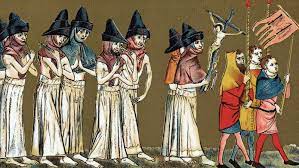 |
In this year, the Register records ‘Peste correpti’ (Plague or Black Death) which claimed seven victims, most of them in one family. While a little later, two victims died of ‘Peste’ (Small Pox). Plague occurred again 1642, taking five victims. Although the numbers appear small, they total each time more than the usual annual death toll of one or two people. |
In 1616, parents of a baptised child are recorded for the first time, and at the end of the year the register is signed:- By me,
George Smith, Jefry Lam, church
p’son there Jo. Ibbot, Wardens -
This practice of Rector and Churchwardens signing the Register continued with breaks for many years, with the Curate signing instead, or occasionally in addition. Rector George Smith was succeeded by George Smith, his son (George Smith II) who was succeeded by George Smith (III), the grandson who died in 1650 during the time of the Commonwealth (1649-1660). According to Parliamentary returns of 1650, John Montague was put in Farnborough and Robert Miller in Chelsfield. No trace of John is found in the Registers but Robt. Miller, is noted as Rector in 1671.
These changes are naturally reflected in the Registers and elsewhere. In many parishes the clergy hid the registers, and this may have happened at Farnborough as, except for two entries dated in 1652, i.e. one baptism and one burial, the entries cease in 1645 and do not begin again until 1661 at the time of the Restoration of the Monarchy.
George Smith III, who became Rector of Chelsfield & Farnborough in 1646 on the death of his father, is described on the family memorial in Chelsfield Church as being an ‘Anglicane ecclesiae presbyteri’ - the presbyterian system had reached Farnborough.
The latter half of the 17th Century up to the General Registration Act of 1836
During the time of the Commonwealth, the Parliamentary Returns record that George Smith was the incumbent at first but on his death, John Montague was installed at Farnborough and Robert Miller at Chelsfield. 1660 saw a return of the Registers to the Clergy. There is no further evidence of John Montague but Robert Miller was adding his signature to the Farnborough Register in 1671, with Philip Jones as the Curate of Farnborough in 1676. The status quo had returned, not needing any Act of Parliament as the incoming Government declared all the Acts of the Commonwealth times to be illegal and non existent. The Prayer Book had been reinstated in 1662 with an additional service - Service of Baptism for Adults - necessary as baptism had officially ceased in 1645 and there were a large number of unbaptised adults.At various times it is noted that taxes were levied. In 1681 a fee of 6d. was payable for the registration of a birth in the Parish Register. By 1694, there was a tax of 4 shillings for each burial, 2 shillings for each birth, and 2 shillings and 6 pence for each marriage. There was also an annual tax of 1 shilling on bachelors and widows.
The system was simplified in 1794 by the Stamp Act which imposed a Duty of 3d. on each entry in a Church Register. Robert Jegon, the Curate at that time, annually records in the Register that the Duty had been settled between himself and Thos. Jones who was the Parish Clerk. This Act was repealed in 1794.
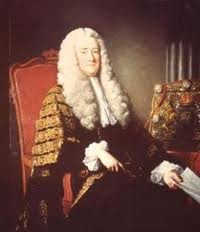 |
The 1752 Marriage Act of Lord Hardwicke (pictured left) required changes in the Register which were partially complied with in Farnborough. Marriages were to be by Banns, by a Bishop’s Licence, and to be in the Parish of one of the persons being married. This part was complied with, as it is written in the Register as well as a list of witnesses. Hardwicke’s Act stipulated that all marriages should be entered in a specially printed Register, using the spaces provided. Farnborough continued with the old Register, but observed the required format. |
George Rose’s Act of 1812 brought in the printed book in place of the old Registers as a legal requirement, and the legal importance of the Parish Register was finally brought to an end by the General Registration Act of 1836, when after September 1st, every Birth, Marriage or Death was recorded by the Civil Authorities at Somerset House in London.
The Church Registers afford a good start to the history of the Parish. It is possible to extract a list of Rectors, Curates, Churchwardens and Parish Clerks over at least parts of a period of over four hundred years, creating a framework to add information from other sources.
Researched and compiled by Peter Bailey
